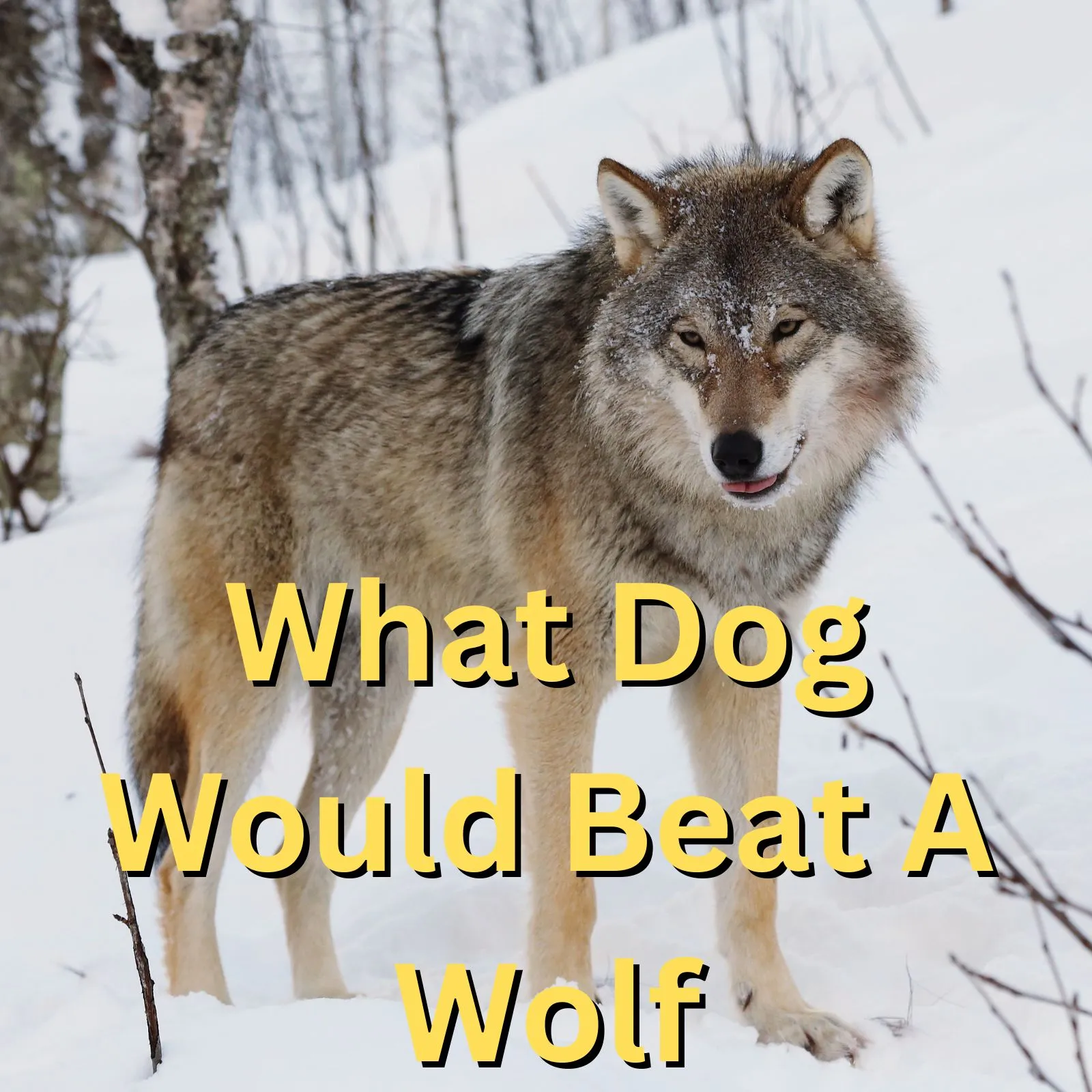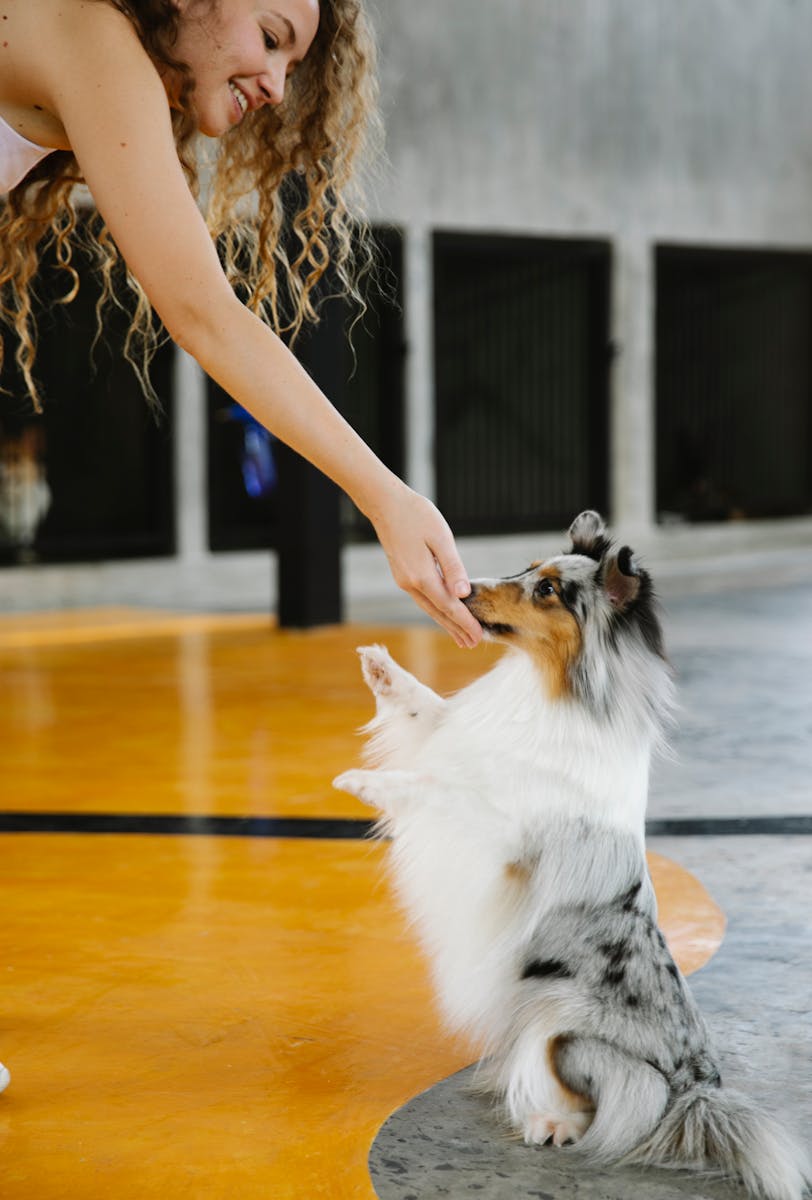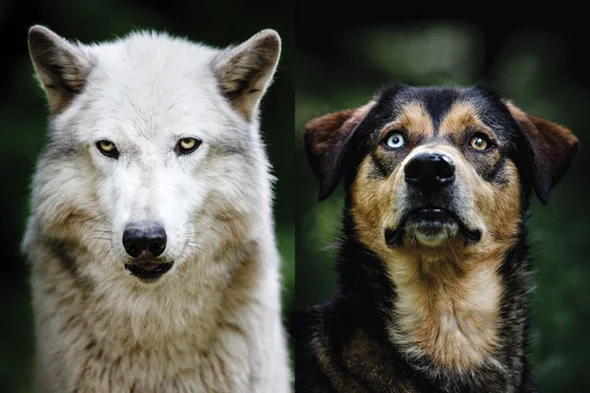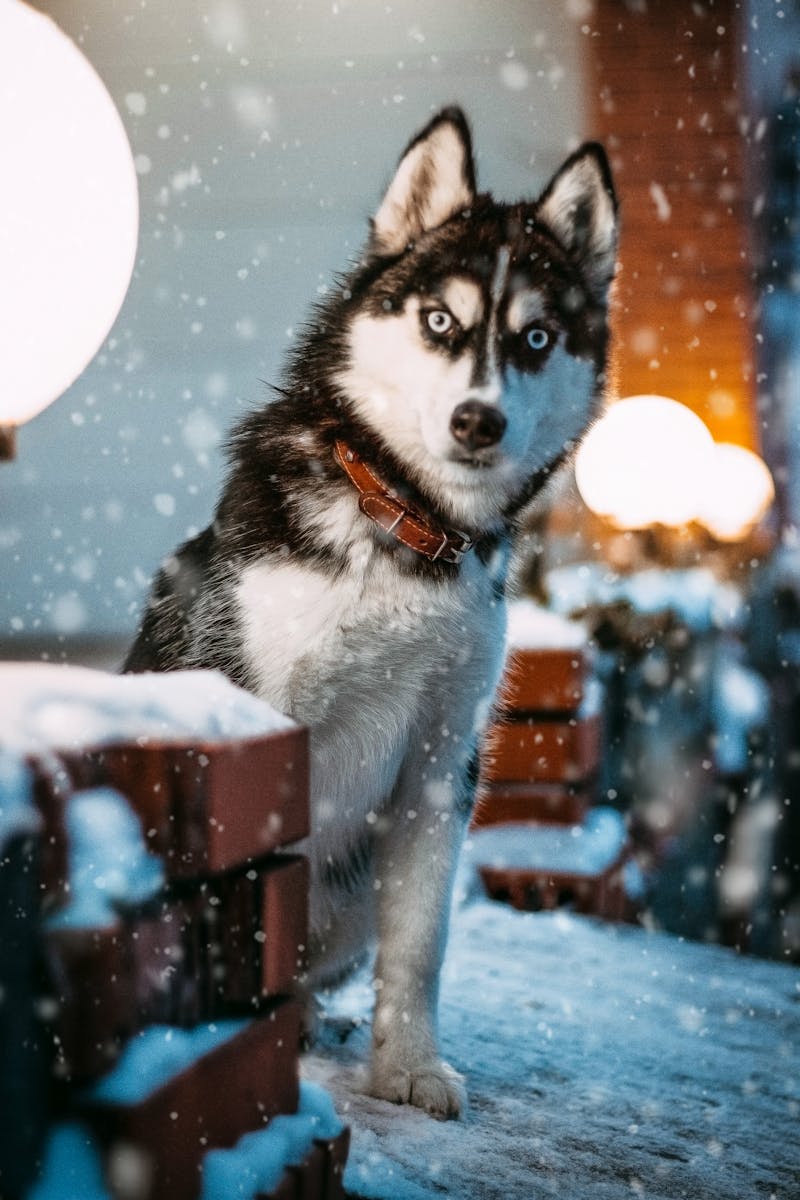
What Dog Would Beat A Wolf

What Dog Would Beat A Wolf
When exploring the fascinating world of canine breeds and their distinct characteristics, one might wonder if a particular dog could triumph over a wolf; an example is the robust Alaskan Malamute known for its physical strength and endurance that matches the power of a wolf.”
| Dog Breed | Characteristic |
|---|---|
| Kangal | Largest and strongest, known to fend off wolves in Turkey |
| Alabai | Ancestral breed utilized for guarding livestock against wolves in Central Asia |
| Caucasian Shepherd | Bred to protect livestock from predators like wolves, highly protective nature |
| Sarplaninac | Balkan breed used as sheep guardians, robust build and size make them capable of handling a wolf |
| Akita Inu | Originally bred for hunting large game like bears, boars, and yes, wolves |
Despite the bravado that Hollywood and folklore might lend to the wolf, various breeds of dogs have been utilized by mankind throughout the ages to handle these haughty hunters. A common denominator between these breeds is their undeniable strength, formidable size, and an ingrained protective instinct that reaches a pinnacle expression when facing threats like wolves.
Kangal
For the uninitiated, the Kangal, may just seem akin to any other herding dog; however, this Turkish breed is renowned for its prominent physique and ferocious fangs capable of delivering a crushing bite. Often weighing over a hundred pounds, this breed has a storied history of bravely securing flock residing in wolf-prone areas.
Alabai
Next inline we have the Alabai, a testament to the survival of prehistorical dog types. Originating in Central Asia’s challenging terrains, these hardy hounds were traditionally used as deterrents for those predatorial wolves who’d dare to venture too close to the respected and fiercely protected herds.
Caucasian Shepherd
Speaking of deterrents, the aptly named Caucasian Shepherd from Russia outshines most competitors as regards both size and tenacity. With massive bodies heavily layered in fur, these mountain strongholds have commendably shielded their territories from lurking wolves, and not without noteworthy success.
Sarplaninac
The Sarplaninac rightfully earns its place as a formidable foe against much-dreaded wolves. This naturally adaptable breed hailing from the Balkans are not only adept at dealing with rough terrains, but they’re equally comfortable exchanging sharp blows with carnivorous invaders seeking illicit entry into the sheep pens.
Akita Inu
Lastly, going a bit easterly into the land of the rising sun, Japan’s native Akita Inu. Initially bred for hunting larger games such as bears and boars, and yes, wolves. Their muscular bodies and agile movements aid immensely during bouts. With a hunter’s intuition and primal intelligence, these dogs can stand toe-to-toe with a wolf.
Wolves are Natural Predators But Dogs Are Natural Companions
Remember, context means everything. Without proper training and socialization of the dog, as well as careful consideration of the particular circumstances of the encounter, things could easily end unfavorably for our canine heroes. The power lies in understanding, nurturing and leveraging these unique traits present in each breed. These brave and mighty dogs are surely up to the task, proving time and again that they’re not merely man’s best friend, but indeed, a wolf’s worst adversary.
Keep in mind that there’s no guarantee a dog will defeat a wolf in every situation. Life isn’t always a consistent sum-total of all the best breed characteristics – there are wild card variables that play a vital role. However, it’s the closest insight we can provide into the abstract equation of “What Dog Would Beat A Wolf.”
As Will Rogers once said about man’s best friend: “If there are no dogs in Heaven, then when I die I want to go where they went.” This loyal yet fierce disposition, complemented with their intrinsic courage and intelligence, truly lends credibility to these efficient wolf-deterring breeds! For indeed, heaven must be missing some angels whilst they crusade out here on earth, keeping those big bad wolves at bay.
Understanding the Physical and Behavioral Advantages of Certain Dog Breeds Over Wolves

When it comes to physical and behavioral advantages, certain dog breeds tower over their wild kin, the wolves. These advantages play a significant role when weighing up who would emerge victorious in a confrontation: a dog or a wolf.
Dog Breeds With Physical Advantages
If we consider pure size, specific dog breeds such as the St. Bernard, English Mastiff, and Newfoundland, outweigh and outsize most wolf species. They feature stronger build, thicker coat for protection, and immense physical strength.
| Breed | Average Weight |
|---|---|
| St. Bernard | 140-260 lbs |
| English Mastiff | 120-230 lbs |
| Newfoundland | 100-150 lbs |
In contrast, an adult male gray wolf averages around 100 lbs. However, raw size and strength aren’t the only factors critical in a confrontation with a wolf. Let’s also consider dogs bred for protective roles or aggressive instincts like the Kangal, Caucasian Shepherd, and the Boerboel. These breeds are renowned not just for their size, but also for their innate assertiveness and territorial nature.
Dog Breeds With Behavioral Advantages
Several dog breeds possess behavioral traits that give them an edge over wolves. For example, both the Caucasian Shepherd and the Kangal breeds were specifically bred to guard livestock – often against wolves.
The Kangal, in particular, displays enormous bravery, being willing to face off against larger predators to protect its flock. This breed has the speed, agility, tenacity, and sheer will that can make it a formidable opponent even for a wolf.
Caucasian Shepherds, on the other hand, have been known to develop strong bonds with their human family and herd to the extent where they are prepared to defend them fiercely from any perceived threat.
As per the quote by Roy Blount Jr., “Dogs are passionate about their friends and bite their enemies quite unlike people who mix these feelings.” This fervor and loyalty of dogs add onto their sustainability against the more introverted, solitary nature of wolves.
Dog-Wolf Encounters: Human Interventional Role
No conversation about dogs versus wolves would be complete without acknowledging the human factor. Canis lupus verticalis) can transform into fearsome opponents when backed by trained and armed humans.
From ancient times, hunters have used pack-hunting breeds like Foxhounds, Beagles, and Coonhounds to track, corner, and hold wolves at bay while the humans deal the finishing blows. These dog breeds might not be much of a match physically for a wolf one-on-one, but their specialized skillsets developed through selective breeding gives them a considerable advantage in a team hunting scenario.
To sum it up, although a wolf is a potent animal, selectively bred dogs with their boosted loyalty, brute force, or specialized skills paired with their human counterparts would undoubtedly turn the tables on the lone wolf.
Exploring Survival Tactics: How Trained Dogs Outperform Wolves

Wolf Vs Dog
Ah, the ever-intriguing question of whether a trained dog can beat a wolf. It’s a topic that always sparks passionate debates among dog enthusiasts and animal behaviorists alike. But to understand why trained dogs may be able to outperform wolves in many areas – and possibly even deter a wolf attack in theory – it’s crucial to explore various survival tactics that our canine companions have mastered over centuries of domestication and intense training.
The Brain Over Brawn Mantra
Wolves are undoubtedly powerful creatures, designed by nature for survival in wild, often hostile environments. They possess an impressive blend of physical strength, agility, endurance, and predatory instincts [source]. Some might argue with certainty about a wolf trumping any breed of dog in a physical confrontation. However, a trained dog has one significant advantage: a highly developed mental capacity that enables them to outthink the wolf.
Trained Dogs as Strategic Thinkers
Highly trained dogs like military, police, or hunting breeds are more than simple muscle; they’re complex thinkers who have been conditioned for problem-solving, adaptability, and advanced obedience. Each command learned represents a cognitive development milestone that enhances their strategic thinking abilities. This makes these dogs effective protectors and deterrents against possible threats, including confrontations with larger, stronger animals such as wolves. Remember, the strongest does not always survive—it’s the most adaptable!
“The only way you can measure the worth of a hound is to watch it run.”
– Lester C. Howe
Canine Tactics: Offensive vs Defensive Stances

Wolf Hunt
A crucial notion to highlight here is that being able to ‘beat’ a wolf doesn’t necessarily mean defeating it in a physical fight. Holistically speaking, surviving or deterrence would be considered a victory. Trained dogs are typically skilled at using both offensive and defensive strategies:
Offensive tactics: This typically encompasses acts such as direct confrontation, proactive aggression, or other assertive behaviours meant to discourage predators. Globally revered breeds like the Kangal or Caucasian Shepherd are renowned for their fearlessness and dominance, enabling them to fend off wolves [source].
Defensive tactics: Here, trained dogs use different methods to divert or confuse potential predators, or warn their human companions about an impending danger. Breeds like the Great Pyrenees or Anatolian Shepherds are well versed in such tactics. They bark vociferously to alert the pack and use evasive manoeuvres to draw the predator (wolf) away from their charges.
In conclusion, when we discuss if a trained dog could ‘best’ a wolf, it’s rather misleading to envisage it solely as a hand-to-hand (or paw-to-paw) combat scenario. The winning edge of trained dogs lies less in their power and more in their intricate understanding of the art of survival—an intertwining dance between courage, tactical thinking, adaptability, and unwavering loyalty.
-References:
1. National Park Service. https://www.nps.gov/yell/learn/nature/wolves.htm
2. Journal of Veterinary Behavior. https://journalvetbehavior.com/article/S1558-7878(10)00191-0/fulltext
Dog Dominance: Examining the Potential for Canine Victory in Wolf Encounters

The premise of a domestic dog outshining a wolf in an encounter might seem a bit far-fetched to some. However, when we delve deeper into the subject matter, we begin realizing that certain breeds have specific traits that could potentially give them an upper hand against a wolf in a head-to-head scenario. Here, the idea isn’t about promoting animal combat but rather shedding light on the inherent strengths of these canines.
Firstly, let’s understand that wolves are inherently wild animals with brute force and a robust physic rendering them formidable adversaries. Yet, as surprising as it may sound, there are certain select breed of dogs that stand a chance against wolves due to their sheer size, strength, and historical purpose of breeding.
| Breed | Origins and Purpose | Potential Advantage Over Wolves |
|---|---|---|
| Kangal | Historically bred in Turkey to guard livestock against predators | Known for its extraordinary strength and courage |
| Irish Wolfhound | Originally bred for war and hunting wolves | Considered one of the largest and strongest breeds |
| Sarplaninac | A shepherd dog hailing from the Sar Mountains in Kosovo and North Macedonia | Famous for defending the flock against wolves |
What Does The Data Say
According to the study by Happy Tales, breeds like Kangals, Irish Wolfhounds, and Sarplaninacs have been known to occasionally ward off or outrank wolves. This is not because they possess raw power surpassing that of a wolf, but rather, due to their display of assertiveness, courage, and carefully honed skills developed over centuries of selective breeding.
Their large physical stature held in comparison with that of an average wolf also contributes to leveling up the playing field. For instance, the Turkish Kangal, which stands up to about 34 inches and weighs a whopping 145 pounds on average, could seemingly intimidate a wolf due to its impressive size advantage.
As they say, “The more I learn about people, the more I like my dog.” – Mark Twain.
Bravery and Strength Are Not Enough
In contrast, it is critical to keep in mind that no matter how brave or strong a dog is, pitting them against a wild predator isn’t advantageous or humane in any given scenario.
Wrapping up our deep-dive into the topic, we come to comprehend that dogs and wolves share a common ancestry, but they’ve evolved along different paths. The scenario of a typical domestic dog prevailing in a brawl against a wolf remains speculative.
Depending on varying factors – such as breed size, strength, inherent traits, and training – one may summarize a few dogs as probable candidates:
| Dog Breed | Key Traits |
|---|---|
| Kangal | Naturally protective, strong, fearless |
| Alabai | powerful, massive, very intelligent |
| American Pit Bull Terrier | Tenacious, physically potent, assiduous |
| Russian Caucasian Mountain Dog | Determined, muscular, agile |
Conclusion
Predicting dog-wolf interactions must also consider external conditions like environment, pack presence, age and health status. However, it needs to be emphasized strongly that such confrontations should never be planned or provoked – as Mark Twain once said: “It’s not the size of the dog in the fight, it’s the size of the fight in the dog”.
Sometimes it’s not about who can win in a fight but who can intimidate who!
To learn more about this topic, visit National Geographic’s page on dogs.
Related
- How Do You Bond With A Belgian Malinois
- Is A Belgian Malinois A Good First Dog
- Do Police Dog Trainers Use E-Collars
You may also like

What Country Has The Most Homeless Dogs

Why Do Dogs Let Cats Bully Them

What Is The Russian Version Of German Shepherd
Archives
- December 2025
- November 2025
- October 2025
- September 2025
- August 2025
- October 2023
- September 2023
- August 2023
- July 2023
- June 2023
- May 2023
- April 2023
- March 2023
- February 2023
- January 2023
- December 2022
- November 2022
- October 2022
- September 2022
- August 2022
- June 2022
- May 2022
- April 2022
- March 2022
- January 2022
- December 2021
- November 2021
- October 2021
- August 2021
- November 2020
- July 2020
- May 2020
- April 2020
- March 2020
- August 2018
- July 2018
- June 2018
- April 2018
- March 2018
Categories
- Aftercare Procedures
- Age Groups
- AI/ML
- Alternative Medicine
- Animal Health
- Animal Husbandry
- Animals
- Anti-Aging
- Architectural Design
- Auditory Science
- Augmented Reality
- Automation
- Babies
- Baby
- Beauty & Skincare
- Biohacking
- Biomechanics
- Book Reviews
- Breastfeeding
- Budgeting
- Budgeting Strategies
- Business
- Cardiovascular Health
- Career Advice
- Career Development
- Career Growth
- Cats
- Chess
- Chronobeauty
- Circular Economy
- Cleaning Tips
- Cloud Computing
- Cognitive Health
- Cognitive Performance
- Cognitive Science
- Community
- Community Building
- Community Engagement
- Community Living
- Computer Vision
- Consumer Guides
- Consumer Trends
- Container Gardening
- Content Analysis
- Content Non-Technical
- Content Strategy
- Cosmetic Chemistry
- Cultural Events
- Cycling
- Data Analysis
- Data Engineering
- Data Science
- Design Psychology
- Developer Productivity
- Diet
- Diet
- Digital Identity
- Digital Media
- Digital Wellbeing
- DIY Projects
- Dogs
- Engineering Culture
- Entertainment News
- Environmental Impact
- Environmental Science
- Equity Compensation
- Ethical AI
- Exercise
- Exercise Science
- Exercise Technique
- Exotic Pets
- Fall Gardening
- Family
- Family Health
- Family Life
- Fashion Business
- Fashion Industry
- Fashion News
- Fashion Tech
- Financial Analysis
- Financial Optimization
- Financial Planning
- Flooring Maintenance
- Food
- Food Psychology
- Food Safety
- Food Tech
- Functional Fitness
- Functional Training
- Future Of Work
- Garden Care
- Garden Maintenance
- Gardening Tips
- Gig Economy
- Greece
- Greek
- Greek Food
- Gymnastics
- Hardware Engineering
- Health
- Health And Wellness
- Health Informatics
- Health Science
- Health Tech
- Healthcare Management
- Healthy Eating
- Healthy Recipes
- Holistic Health
- Holistic Wellness
- Home & Living
- Home Decor
- Home Financing
- Home Health
- Home Improvement
- Home Organization
- Horticulture
- Identity Management
- Industrial Design
- Industry Analysis
- Infant Nutrition
- Infrastructure Management
- Ingredient Deep Dive
- Integrative Health
- Integrative Medicine
- Interior Design
- Internet of Things
- Internet of Things (IoT)
- Invalid Request
- Investment Strategies
- Investment Strategy
- IoT
- Kids
- Leadership Development
- Learning Strategies
- Lifestyle
- Lifestyle Brands
- Lifestyle News
- Lifestyle Optimization
- Literary Criticism
- Literature
- Logistics Management
- Material Science
- Materials Science
- Meal Planning
- Media Analysis
- Meditation
- Mental Health
- Mental Performance
- Mental Wellness
- Miami
- Miami Food
- Mind And Body
- Minimalism
- Mobile Development
- Neuroscience
- No Applicable Categories
- Nutrition
- Nutrition News
- Operating Systems
- Operational Resilience
- Opinion
- Organization Tips
- Outdoor Living
- Over 40
- Over 50
- Over 60
- Parenting
- Parenting
- Parenting Strategies
- Performance
- Personal Development
- Personal Finance
- Personal Growth
- Personal Productivity
- Pet Care
- Pet Safety
- Philosophy
- Politics
- Productivity
- Protein
- Psychology
- Psychology of Space
- Reading Culture
- Real Estate Investment
- Recipes
- Regulatory Compliance
- Remote Work
- Renovation Planning
- Resource Management
- Respiratory Health
- Responsible Pet Ownership
- Retail Strategy
- Robotics
- Science
- Seafood
- Seasonal Gardening
- Security
- Sedentary Health
- Self-Care
- Skincare Science
- Skincare Trends
- Sleep
- Sleep Health
- Smoothies
- Social Impact
- Soft Skills
- Soil Health
- Spatial Computing
- Spatial Design
- Stress Management
- Supplements
- Sustainability
- Sustainability Science
- Sustainable Engineering
- Sustainable Fashion
- Systems Engineering
- Tax Optimization
- Tax Strategy
- Tech Investment
- Travel
- Travel News
- Travel Safety
- Travel Tips
- Trend Analysis
- Uncategorized
- Urban Planning
- User Experience
- Veggie
- Virtual Events
- Volunteering
- Wealth Management
- Wearable Technology
- Wellness
- Wellness Technology
- Work-Life Balance
- Workplace Culture
- World
- Writing
- Writing Skills
- Yoga News
- Zero Waste

Leave a Reply